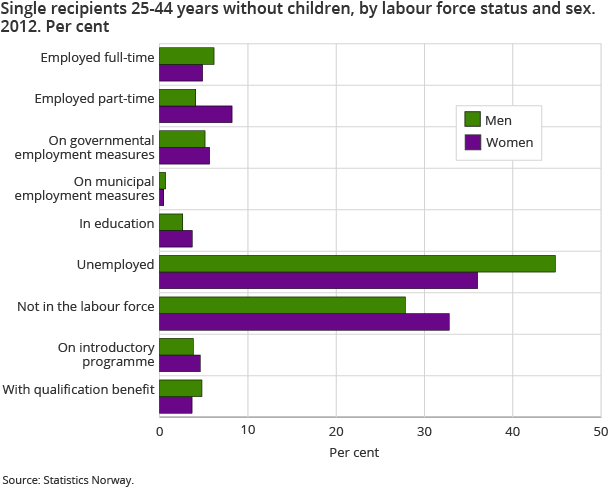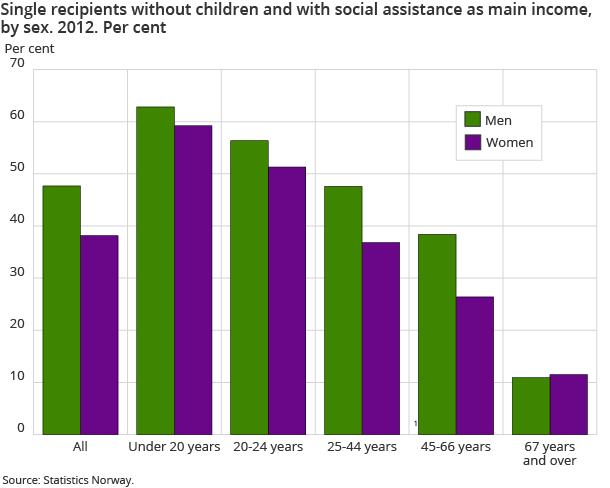Content
Published:
This is an archived release.
Recipients down, but major local differences
In 2012, there were 114 800 recipients of social assistance; 3 200 less than the previous year. Total payments were hardly down at all, however.
| 2012 | |
|---|---|
| 1Expenditure in 2011. | |
| Recipients of social assistance | 114 804 |
| Single males total | 45 909 |
| Single females total | 26 286 |
| Social assistance as primary source of income | 46 046 |
| Expenditure on social assistance (1 000 NOK)1 | 4 502 659 |
| Average payment per month | 7 816 |
The decrease in the number of recipients from 2010 to 2011 was accelerated in 2012. Payments were almost stable, and amounted to NOK 4.50 billion; the same as the year before. This means that payments per recipient were up.
The proportion of recipients with social assistance as their main source of income fell from 2006 to 2011, but was slightly up last year, to just above the 40 per cent level. This might be seen in connection with the reduction in qualification benefits last year. Ten per cent of recipients of social assistance had salary as their main source of income, while 32 per cent depended on pensions.
Among the recipients, the proportion with social assistance as their main source of income was 48 per cent among single men, while the corresponding figure for single women was 38 per cent. The highest dependency was among single men under 20 years old, with 63 per cent. The reasons for the difference between single men and women are illustrated in the figure. The figure shows the labour force status of single recipients aged 25-44 years. As can be seen, more men are unemployed among the recipients, while more women are employed, in education or studying, or receiving pensions (i.e. not in the labour force). Overall, these factors contribute to a marked difference in social assistance dependency between men and women.
Differences according to region and municipality
Only three of the nineteen counties saw an increase in the number of recipients last year. The increase was most notable in the south-eastern county of Østfold, where 13 of the 18 municipalities had an increase in the number of recipients. The sharpest declines were in the central county of Oppland and Nordland in northern Norway. Nationally, 166 municipalities had an increase and 248 a decrease, while in the 15 remaining municipalities the numbers were stable. All 429 municipalities had recipients of social assistance in 2012.
One out of eight recipients were full or part-time workers, 67 per cent were unemployed or pensioners.
Those in receipt of social assistance for 6 months or more during the year are defined as long-term recipients. In 38 mostly larger municipalities, this proportion exceeded 40 per cent, while in 95 mostly smaller municipalities 15 per cent or less were defined as long term recipients.
Contact
-
Unni Beate Grebstad
E-mail: unni.grebstad@ssb.no
tel.: (+47) 94 50 68 66


